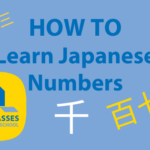How To Learn Kanji // 7 Tips for Success 💪
Tips & Tricks to Learn Kanji PLUS The 100 Most Common Japanese Kanji
How to learn Kanji? Ask any Japanese learner and they may just laugh. Or cry.

Kanji is one of the main reasons why people say Japanese is so much harder than Korean, and a big reason as to why Japanese is one of the hardest languages in the world to learn for native English speakers.
Although, it might make things a bit easier for those Chinese speakers! But why?
Because Kanji is just that. Chinese characters.
So if you are here to learn Kanji, we hope you’ve mastered Hiragana, and you’ve mastered Katakana.
First and foremost… if not, stop right there and check these out:


If you’ve nailed those, then it’s time to figure out how to learn Kanji!
How to Learn Kanji – Get Your Head Around The Concept
How to Learn Kanji – Understand The Double Ups
How to Learn Kanji – Tip #1 | Repetition
How to Learn Kanji – Tip #2 | Learn Vocab with Kanji
How to Learn Kanji – Tip #3 | Consider Context
How to Learn Kanji – Tip #4 | Read, Write, Read
How to Learn Kanji – Tip #5 | Use Apps
How to Learn Kanji – Tip #6 | Heisig’s Method
How to Learn Kanji – Tip #7 | Don’t Stress on Stroke Order
BONUS // Top 100 Most Common Kanji
How to Learn Kanji – FAQ’s
How to Learn Kanji // Get Your Head Around The Concept
The key to learning anything properly, first get your head around what Kanji is, and what it means to Japanese.
As I’ve covered in Hiragana and Katakana, Kanji is the third alphabet in Japanese. Although it’s not an alphabet with letters like we’re used to, it’s a set of Chinese symbols.
Each symbol has a pronunciation and carries a specific meaning.
There are over 10,000 Chinese symbols altogether. But don’t fear! Not all of these are used in Japanese.
Generally, you’ll need to learn about 1,000-2,000 Chinese characters in Japanese to be able to be considered an intermediate or advanced learner, and to be able to read a newspaper.
It’s also important to note that Kanji in Japanese are pretty special.
Just like how Taiwan uses traditional characters, and mainland China uses simplified, Japan has its own variant, too.
Pretty much a mix of traditional and simplified, but airing more on the traditional variant.
Plus point if you ever decide to learn Mandarin – you’ll look well cool knowing all the traditional characters.

How to Learn Hiragana (Quickly) // 7 Terrific Tips To Success
How to Learn Hiragana? It might seem difficult but Hiragana can be understood within a few hours. Follow these tips for success and start reading Hiragana.
How to Learn Kanji // Understand Doubling Up!
Another very important point is that, unfortunately, each Kanji actually has two different readings. Yay.
So… Instead of one pronunciation for a character like you’d see in Chinese, each character has TWO pronunciations.
How awful.
Yep, it’s pretty much as bad as it sounds!
BUT… for some reason, our brains get used to how each pronunciation is used and after a while.
If you’re reading a new word with a Kanji in it you already know, you’ll be able to pronounce it right without ever having heard the word before.
Magic!
It really happens. Promise.
So why the two readings in Kanji?
Basically one is the Chinese reading, and one is the Japanese reading. The Chinese readings are often pretty similar to the Chinese pronunciation as well. They are called on’yomi and kun’yomi.
Some Kanji’s have a dominant reading, you may only ever see them pronounced in the Japanese reading way. Others, it just depends on how they’re being used!
Let’s look at an example:
- 食べる is ‘to eat’ and the ‘食’ is pronounced ‘ta, た’ , the whole word is ‘taberu’. This is an example of Kun’yomi.
- 食事 means meal, and the ‘食’ is pronounced ‘shoku, しょく’, the whole word is ‘shokuji’. This is an example of On’yomi.


Kanji is great because you can understand things as soon as you see the picture, when you get familiar with the context and usage.
食 means ‘eat, food’ etc.
So, when you see this character, you know that the word probably has something to do with food, even though you’ve never seen the word before!
Now let’s move onto my top tips for learning Kanji!
How to Learn Kanji // Tip #1 | Repetition
Honestly, it’s my preferred method but I know it’s not most people’s.
I would walk to university every morning with 10 Kanji written down, and repeat them over and over in my head.
How to pronounce them and their meaning.
BUT – and this is important. I would learn them in context. So, I wouldn’t just pick a random character like 食 and try to remember that it means something like ‘eat / food’.
I would pick the verb ‘to eat’ and memorise that, and pick the noun ‘meal’ and memorise that.
I’d then do the same thing walking home from university.
Honestly, it sticks for me.
It’s the same with most languages and alphabets as well, practice and repeating will always see you through, as boring as it sounds.

How to Learn Kanji // Tip #2 | Learn Vocab with Kanji
Expanding on the above tip, learn Kanji with vocabulary.
Kanji is one of the things you start to learn later on in Japanese. You will first learn some bits of vocab then start adding Kanji in there as your confidence grows.
If you really like learning Kanji, or if Kanji HELPS you to learn vocab (like it does for me) you could write the Kanji next to your new vocab items as you learn the words.
Let’s just say I learnt the word for the number one in Japanese:
- This is いち (ichi) in Hiragana
- Rather than just learn the Hiragana why not learn the Kanji alongside it?
- いち in Kanji is 一
So I’ve learned the word for “one” but it’s two for the price of one with the Kanji thrown in as well!
BUT be careful, since there are stylistic details to be considered here.
Nearly all words have Kanji, but many words never use them.


FOR EXAMPLE – You’ll very rarely see coffee written as 珈琲 (the Kanji version). It’s usually written in katakana as コーヒー ‘ko-hi-‘.
Although, I do remember the first time I saw coffee written like that in a fancy cafe!

Japanese Numbers // Your Complete Guide (With Quiz Included)
DO NOT WORRY – learning Japanese numbers is not so difficult. Learning the numbers in Japanese can also open up some unexpected doors.
How to Learn Kanji // Tip #3 | Consider Context
Adding some context to your vocabulary and Kanji learning will really help things stick.
Maybe learn in sentences. Or, perhaps when you’re reading or writing and come across a Kanji you don’t know, look it up there and then, write it down, and try to learn it.
Come back to it later and check if you know it or not.
BONUS RECOMMENDATION – A good tool for something like this would be a spaced repetition app like Anki.
At LTL we’ve actually created a load of shared decks you can download for free and use!
How to Learn Kanji // Tip #4 | Read, Write, Read
Read, write, rinse and repeat. Some people will try to tell you you don’t need to write Kanji…
That’s wrong.
Sure, you might rarely write Kanji in this technologically profound era, but writing is a GREAT way to make those pesky Kanji stick in your memory.
PLUS, you will probably need writing skills for your exam.
So Read. Write. Repeat. This will be a great help on how to learn Kanji.
How to Learn Kanji // Tip #5 | Utilise Apps
Like learning vocabulary in any language, there are so many apps to help you learn Kanji.
I like Memrise, purely because I like the simplistic repetitive element, but find your own app.
Skritter is another good app for playing with stroke order and how the Japanese characters are built.
They have a “Top 100 Kanji” section for JLPT N5 (this is essentially the beginner level test for foreigners wanting to study Japanese).
There are plenty of others out there.
Do stay tuned on our blog as we spend a lot of time reviewing apps for languages. We’ve done a ton for Mandarin and we’ll be doing more for Japanese also.
How to Learn Kanji // Tip #6 | Heisig’s Method
A great tip for people just getting to know characters.
Heisig’s method draws upon the fact that all Chinese characters are made up of radicals.
For a more in-depth explanation on this, have a look at our Chinese vs. Japanese vs. Korean blog.
Basically the theory is there are lots of little characters or radicals placed within one character, that suggest both meaning and pronunciation.
This method helps by putting pictures to Chinese characters, which, to be fair, is what they’re based on originally anyway!
Using this method will help associate images to the characters and make them much easier to understand as well as remember.
How to Learn Kanji // Tip #7 | Don’t Stress on Stroke Order
Be careful not to misunderstand this one! In the cold light of day, stroke order isn’t THAT important when it comes to Kanji
If you’re finding it tough, then concentrate on the things that really matter.
We certainly aren’t saying ignore stroke order! Get a basic grip of stroke order and follow that generally, but otherwise, don’t get too caught up on it.
You have better things to worry about on your Japanese journey.
Think of it this way… when speaking with a local or trying to decode a menu, stroke order won’t do you many favours. Speaking and understanding will!
So don’t ignore it, just don’t fret on it for hours on end.
BONUS // Top 100 Kanji
Just to get you on the right track, and because we are so good to you, we have compiled a list of the most common Kanji used in Japanese.
Below are the top 100 most commonly used Kanji.
Don’t worry about learning and remembering them all right now – this is all about recognising and understanding what Kanji are.
REMEMBER – Kanji work differently to Hiragana and Katakana. With these two, each symbol you see represents a single sound/syllable. Kanji can represent more than one sound.
FOR EXAMPLE – let’s take #4 on the list below which is 年.
- The On’Yomi for 年 is ネン (nen)
- The Kun’Yomi for 年 is とし (toshi)
See how one Kanji is represented by two Hiragana/Katakana and therefore two syllables.
| Kanji | English Translation |
|---|---|
| 日 | sun |
| 一 | one |
| 大 | big |
| 年 | year |
| 中 | middle |
| 会 | to meet |
| 人 | human being, people |
| 本 | book |
| 月 | moon, month |
| 長 | long |
| 国 | country |
| 出 | to go out |
| 上 | up, top |
| 十 | 10 |
| 生 | life |
| 子 | child |
| 分 | minute |
| 東 | east |
| 三 | three |
| 行 | to go |
| 同 | same |
| 今 | now |
| 高 | high, expensive |
| 金 | money, gold |
| 時 | time |
| 手 | hand |
| 見 | to see, to look |
| 市 | city |
| 力 | power |
| 米 | rice |
| 自 | oneself |
| 前 | before |
| 円 | yen (Japanese currency) |
| 合 | to combine |
| 立 | to stand |
| 内 | inside |
| 二 | two |
| 事 | affair, matter |
| 社 | company, society |
| 者 | person |
| 地 | ground, place |
| 京 | capital |
| 間 | interval, between |
| 田 | rice field |
| 体 | body |
| 学 | to study |
| 下 | down, under |
| 目 | eye |
| 五 | five |
| 後 | after |
| 新 | new |
| 明 | bright, clear |
| 方 | direction |
| 部 | section |
| 女 | woman |
| 八 | eight |
| 心 | heart |
| 四 | four |
| 民 | people, nation |
| 対 | opposite |
| 主 | main, master |
| 正 | right, correct |
| 代 | to substitute, generation |
| 言 | to say |
| 九 | nine |
| 小 | small |
| 思 | to think |
| 七 | seven |
| 山 | mountain |
| 実 | real |
| 入 | to enter |
| 回 | to turn around, time |
| 場 | place |
| 野 | field |
| 開 | to open |
| 万 | 10,000 |
| 全 | whole |
| 定 | to fix |
| 家 | house |
| 北 | north |
| 六 | six |
| 問 | question |
| 話 | to speak |
| 文 | letter, writings |
| 動 | to move |
| 度 | degree, time |
| 県 | prefecture |
| 水 | water |
| 安 | inexpensive, peaceful |
| 氏 | courtesy name (Mr., Mrs.) |
| 和 | harmonious, peace |
| 政 | government, politics |
| 保 | to maintain, to keep |
| 表 | to express, surface |
| 道 | way |
| 相 | phase, mutual |
| 意 | mind, meaning |
| 発 | to start, to emit |
| 不 | not, un-, in- |
| 党 | political party |
This video here is also a great introduction to Kanji and the commonly used ones you’ll need to know to get started.
Like I said at the start, there is no definitive method on how to learn Kanji, since everyone learns differently.
The biggest tip is to discover how you best learn. If your friend has a full proof method, try it, but don’t fret if it doesn’t work for you. We are all different.
Try out a few methods before sticking to your own, and most importantly – enjoy it!
Learning Kanji will help with your Japanese and also make you seem pretty cool in front of your friends. It also proves you are smart, because it’s not easy and takes much time to master.
Kanji is a test of your memory, so as we’ve stated numerous times… RINSE and REPEAT your way to success!
Good luck with your Kanji studies and if you ave any of your own tips and tricks, let us know in the comments below.
BONUS CONTENT | Interested in other languages too? Why not check out our huge list with over 500 Chinese words to learn and the most commonly used words in Korean too.
How to Learn Kanji // FAQ’s
Do Kanji only represent one syllable?
No.
Kanji work differently to Hiragana and Katakana.
With these two, each symbol you see represents a single sound/syllable.
Kanji can represent more than one sound.
What are on’yomi and kun’yomi?
These are the names of the two different readings for each Kanji in Japanese.
So why the two readings in Kanji?
Basically one is the Chinese reading, and one is the Japanese reading. They are called kun’yomi and on’yomi.
The Chinese readings are often pretty similar to the Chinese pronunciation.
Let’s look at an example:
食べる is ‘to eat’ and the ‘食’ is pronounced ‘ta, た’ , the whole word is ‘taberu’. This is an example of Kun’yomi.
食事 means meal, and the ‘食’ is pronounced ‘shoku, しょく’, the whole word is ‘shokuji’. This is an example of On’yomi.
What is 1, 2, 3 in Japanese Kanji?
This is really easy even for non native speakers as it is simply:
一 二 三
These are spoken as ichi, ni and san.
What does the Kanji 日 mean?
日 means sun/day in Japanese and is spoken as hi (like he in English).
How many Kanji characters do I need to learn to read Japanese?
Generally, you’ll need to learn about 1,000-2,000 Chinese characters in Japanese to be able to be considered an intermediate or advanced learner, and to be able to read a newspaper.
Want More From LTL?
WANT TO LEARN JAPANESE? Check out our online Japanese courses here.
We offer a 7-day free trial to all new students where you can study 24/7.
What about studying Japanese in Japan instead? We’ve got your back. Our Japanese courses in Tokyo can either be taken in small groups of no more than 5 students or individually for a more tailored experience.
We even offer incredible homestay experiences in Tokyo as well.
Come and be a part of this amazing community.









7 comments
Kanji man, my nemisis!!
Keep trying hard Graham, you'll get there!!
Great ideas and tips
Thanks very much Tom
Good tips, definitely helps to have a background in Mandarin
100% correct
[…] Generally, you’ll need to learn about 1,000-2,000 Chinese characters in Japanese. Here’s the… […]